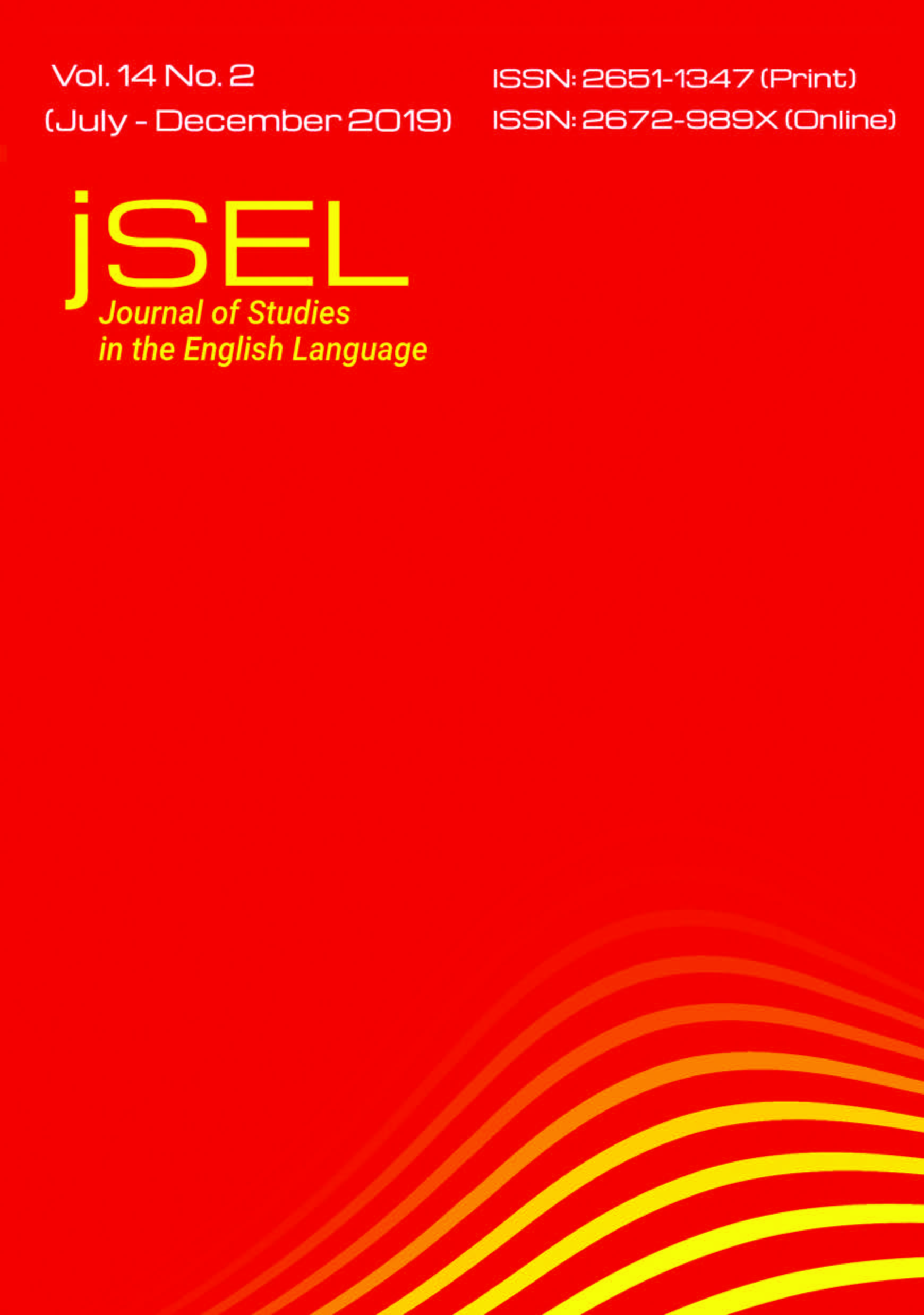Materialism Construction: Keyword Analysis of Bruno Mars’ Song Lyrics
Main Article Content
Abstract
Music has long been an effective way to communicate to the masses, and lyrics play an essential role in delivering this communication. Lyrics may contain an ideology and influence listeners. This study aims to conduct a keyword analysis to investigate the materialistic ideology connoted in Bruno Mars’ song lyrics. The corpus of Bruno Mars’ lyrics was compiled from lyrics of 30 Bruno Mars songs in three albums released between 2010 and 2016. The corpus was then compared against the British National Corpus (BNC) to obtain a keyword list. The top 100 keywords were selected based on their statistical values for further analysis. They were classified according to their part of speech, and concordance lines of each keyword were obtained so as to discuss the representation of Bruno Mars’ songs. Materialistic concepts found in the corpus include an emphasis on, or preference for, luxury objects, brand-name items, a lavish lifestyle, parties, economic power, physical appearance, and objectifying women.
Article Details
References
Archer, D., & Culpaper, J. (2009). Identifying key sociophilological usage in plays and trial proceedings. Journal of English Linguistics, 286-309.
Baker, P. (2006a). ‘The question is, how cruel is it?’ Keywords, foxhunting and the House of Commons. In D. Archer (Ed.), What’s in a Word-list? Investigating Word Frequency and Keyword Extraction (pp. 125-136). Preston, UK: University of Central Lancashire.
. (2006b). Using corpora in discourse analysis. London, UK: Continuum.
. (2010). Sociolinguistics and corpus linguistics. Edinburgh, UK: Edinburgh University Press.
Ballard, M. E., & Coates, S. (1995). The immediate effects of homicidal, suicidal, and nonviolent heavy metal and rap songs on the moods of college students. Youth & Society, 27(2), 148-168.
Belk, R. (1985). Materialism: Trait aspects of living in the material world. Journal of Consumer Research, 12, 265-280.
Bennett, A. (2000). Popular music and youth culture: Music, identity and place. Basingstoke, UK: Macmillan.
Bondi, M., & Scott, M. (2010). Keyness in texts. Amsterdam, The Netherlands: John Benjamin.
Bruno Mars Influencer Analysis, n.d., accessed 8 August 2018 Retrieved from https://pt.klear.com/profile/BrunoMars
Bruno Mars Lyrics, Song, and Albums, n.d., accessed 17 September 2018 Retrieved from < https://genius.com
/artists/Bruno-mars>
Carreon, J. R., Watson Todd, R., & Knox, J. S. (2013). Medical tourism communication of a Thai private hospital website. Journal of Applied Linguistics and Professional Practice, 8(2), 165-185.
Culpeper, J. (2009). Words, parts-of-speech and semantic categories in the character-talk-of Shakespeare’s Romeo and Juliet. International Journal of Corpus Linguistics, 14(1), 29-59.
Dallin, R., (1994). Approaches to communication through music. Retrieved from https://www.southdowns.nhs.uk/index. cfm?request=c2007985.
Francis, G. (1993). A corpus-driven approach to grammar: Principles, methods and examples. In M. Baker, G. Francis, & E. Tognini-Bonelli (Eds.), Text and Technology (pp. 137-156). Amsterdam, The Netherlands: John Benjamins.
Ger, G., & Belk, R. W. (1996). Cross-cultural differences in materialism. Journal of Economic Psychology, 17, 55-77.
Grazian, D. (2010). Mix it up: Mass media, popular culture and society. New York, NY: W. W. Norton & Company.
Kasser, T. (2002). The high price of materialism. Cambridge, MA: MIT.
Korsawatpat, N. (2016). Keyword analysis of an English-language Buddhism book (Unpublished master’s thesis), King Mongkut’s University of Technology Thonburi, Bangkok, Thailand.
Logan, B., Kositsky, A. & Moreno, P. (2004). Semantic analysis of song lyrics. Proceeding of the IEE International Conference on Multimedia and Expo (ICME ’04) (pp. 827–830). Taipei, Taiwan.
Mason, W. A., Conrey, F. R., & Smith, R. E. (2007). Situating social influence processes: Dynamic, multidirectional flows of influence within social networks. Personality and Social Psychology Review, 11(3), 279-300.
Monk, G., Winslade, J., & Sinclair, S. (2008). New horizons in multicultural counseling. Thousand Oaks, CA: Sage.
Richins, M. L., & Dawson, S. (1992). A consumer values orientation for materialism and its measurement: Scale development and validation. Journal of Consumer Research, 19(3), 303- 316.
Schneider, E. W., & Miethaner, U. (2006). When i started to using BLUR: Accounting for unusual verb complementation pat-terns in an electronic corpus of Earlier African American English. Journal of English Linguistics, 34, 233-256.
Schudson, M. (1991). Delectable materialism: Were the critics of consumer culture wrong all along? The American Prospect, 2, 26–35.
Scott, M., & Tribble, C. (2006). Textual patterns: Key words and corpus analysis in language education. Philadelphia, PA: John Benjamin.
Suddreth, B. (2009). Hip-hop dress and identity: A qualitative study of music, materialism, and meaning (Unpublished master’s thesis). University of North Carolina, Greensboro, North Carolina.
Taina J. (2004). Keywords in heavy metal lyrics: A data-driven corpus study into the lyrics of five heavy metal subgenres. Helsinki, Finland: University of Helsinki.
The American Academy of Pediatrics. (2009). Impact of music, music lyrics, and music videos on children and youth. Pediatrics, (124)5. Retrieved from https://pediatrics. aappublications.org/content/124/5/1488
Wanamaker, C. E., & Reznikoff, M. (1989). Effects of aggressive and nonaggressive rock songs on projective and structured tests. The Journal of Psychology Interdisciplinary and Applied, 123(6), 561-70.
William, R. (1983). Keywords: A vocabulary of culture and society. Fontana, CA: Fontana Paperbacks.


